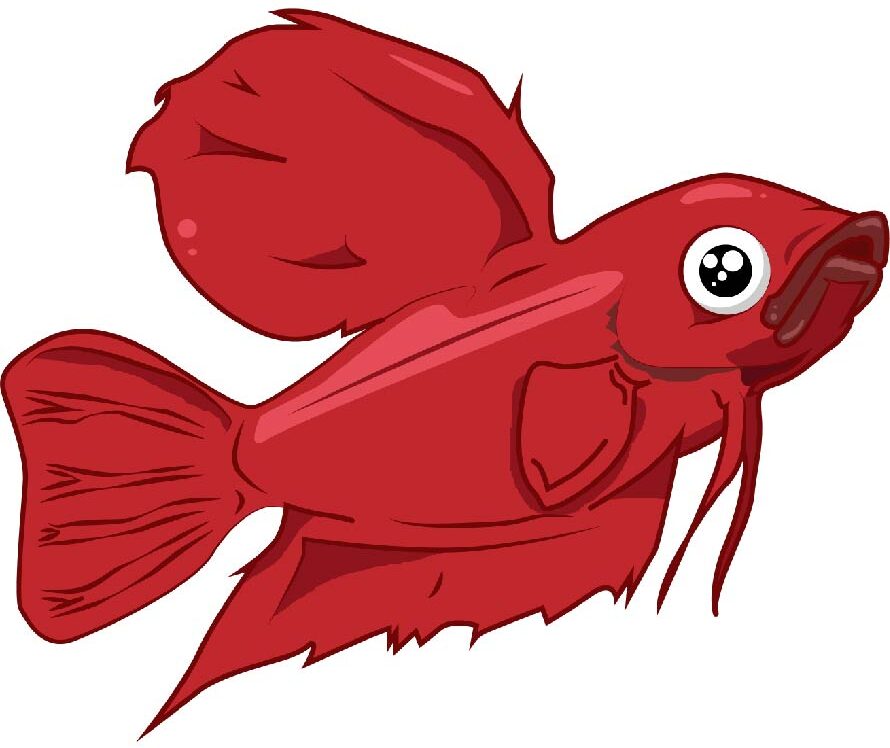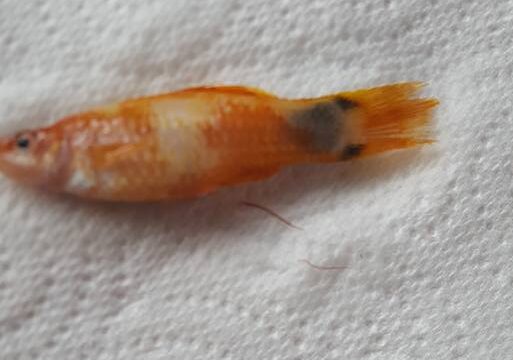Camallanus worms
You’re looking into your tank and you see something that looks like red hairs sticking out of your fish’s bum, what do you do.
Normally I’d say don’t panic, in this case, you can have a little panic, because this a serious problem. Your fish are probably infected with camallanus worms. Is it treatable, yes, is it going to be a bit of a nightmare, also yes?
First question what are camallanus words. A species of nematode or roundworm once upon a time these worms were rare enough that older books don’t have that much information, but the commercialisation of fish farming has led to the spread of certain parasites worldwide, and camallanus is one of them, still more a feature of farmed fish than wild fish Cammallanus cotti is the species we see most in the aquarium.
The females are the ones you see hanging out of your fish’s anus, this is to allow them to scatter their eggs, and yes once you’ve seen them it’s already too late, your whole aquarium will need treating. The worms hang on to the fish’s intestinal walls, cutting off the blood supply to that tiny piece, that piece will become necrotic, but at this point, the worm moves on to another part of the intestine. Eventually, infection can set in, which is often fatal for the fish.
Most camallanus need an intermediate host. So the female lay fertile eggs, they are eaten by or infect something and grow in there before emerging to be able to reinfect fish, but C. Cotti and C. Lacustris don’t always need that intermediate host, so one infected fish can infect your whole aquarium.
Treatment
There is no known treatment for the larval form whilst it’s still in its cyst, meaning those that are already in your substrate will be able to reinfect your fish in the near future. But the adults can be easily treated using Levamisol or Fenbendazole, follow the links for meds containing each of those. The eggs are the real challenge.
The easiest way, although not the cheapest is to get rid of all your substrate and plants, although you can leave the aquarium without any fish or other potential hosts for 4 weeks. 3 weeks is the reported time the larva can survive outside of a host, so by moving all potential hosts out of the aquarium for 4 weeks, it is assumed that the eggs etc won’t survive. But the lifecycle is poorly understood to say the least.
Clean and start again
This is the quickest and most drastic method.
Get rid of everything that can’t be sterilised. This will include substrate, plants, filter media, some types of wood, and other things. Everything else will need sterilisation, pour boiling water over everything you can, and leave out of water for a few weeks.
Meanwhile using the bare tank treat the fish with one of the medicines above. Vacuum the bottom of the tank daily to remove eggs and expelled worms.
Personally, I would leave the fish in the bare tank for 4 to 6 weeks to make sure that you have dealt with the infection. If needed during this time repeat the treatment.
Leaving your tank fallow
Most studies say that C. cotti can live for up to three weeks outside of a host. So if there is no host for 4 weeks in the tank, then the larvae will probably die.
In this treatment, you will need another tank or large plastic container. You will need to have a new source of filtration. If you don’t have a filter you can clone then you will need to do daily water changes, which you will be doing anyway to get rid of the eggs and larvae.
Transfer the fish to the bare tank or container and treat as above. Meanwhile treat the tank as if there were fish in there, using one of the medications, this may not even touch the cysts, but it may help.
In order to not lose your cycle dose with ammonia to keep your filter bacteria fed.
Repeated treatments
If the above isn’t going to work for you then there is a third option, and that is to leave everything where it is, but to do repeated treatments of the fish for the worms as they hatch. As the life cycle is 3 or 4 weeks to maturity you could treat every two weeks for 3 or 4 cycles of treatment. It’s likely that the fish will be reinfected several times, but this may allow you to get on top of the outbreak. You will need to clean the gravel daily still and try to reduce the burden on your fish as they expel the worms and eggs/cysts/
Overall this will be stressful on the fish, but is there a way to avoid Camallanus?
Prevention is better than cure.
There are a few things you can do to avoid this, and most of the other common diseases we see in the hobby, ever reaching your tank.
- Always quarantine, you will need a large container and a sponge filter running in your main tank, a heater and something for the fish to hide in. I prefer a cheap tank as you can watch the fish better, but it’s normally a cheap second-hand tank. I keep the new fish isolated for between 6 weeks and 6 months depending on the species.
- Select your fish carefully. Cheap guppies are the leading culprit for camallanus worms, although I’ve seen them in a range of species, including angelfish, female bettas, and many more. If you are looking to buy guppies consider going to a fish event, like the British Live Bearers Association meeting, and purchasing your fish from a breeder. It’s no guarantee, but with up to 90% of some stock infected it is a far better option.
- Pay more for your fish. The cheaper farms are the ones we are seeing outbreak after outbreak. Ask the fish shop which farms the fish have been raised on and if there have been any reports of camallanus worms, as well as fish TB and columnaris.

